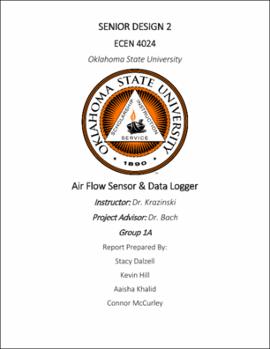| dc.description.abstract | The problem of heating and cooling buildings efficiently continues to present a significant concern for facility managers throughout the world. Factors contributing to air leakage, such as opening a door or general escape through a building's crevices, greatly decrease the system's efficiency, which in turn, translates to higher operating costs. By measuring the temperature and flow of air into a room and comparing it to the rate of return, the air conditioning system's efficiency can be determined and areas of inefficiency can be resolved. Accordingly, there is a need for monitoring equipment which can record airflow characteristics in an isolated section of ventilation duct for extended periods of time. The objective for this research project was to design and implement a prototype for a low-power, low-restriction airflow and temperature logger which is capable of autonomous operation for at least one month. This report, which serves as a methodological description for the design and implementation of our chosen sensor system, demonstrates a proof of concept for a device which is capable of autonomously measuring the temperature and rate of airflow through a ventilation duct for a period of over two months. Our system, which utilizes a low-profile 3.3V battery to supply an ultra-low power processor, employs custom-fabricated PCB boards containing analog temperature and IR distance sensors to take measurements from a vane flapper. Our prototyped design surpasses specifications in the areas of power regulation, temperature reading, response time, and flow allowance. However, it falls short in the operations of data logging and reliable airflow reading accuracy. With further development, our sensor system has the potential to prove a viable option for efficiency monitoring in large-scale deployments. | |
